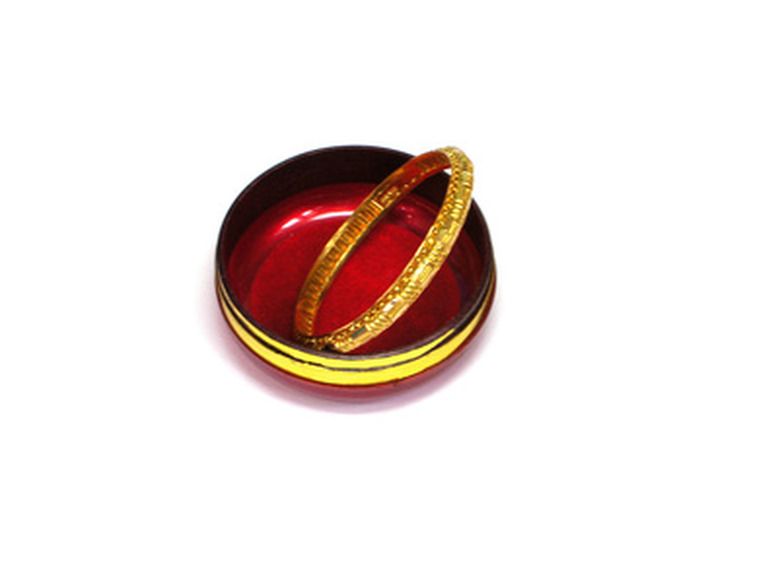How To Best Use Gold Test Kits
Gold testing kits are used to test the purity of the gold and the 'Karat'. Testing kits can either come in the form of acid testing — the most popular form — that can identify the Karat and purity of the gold through acid reactions, electronic testing kits and touchstone testing kits that compare the reaction of real gold to other forms of gold you may have. Gold testing kits are also valuable tools for identifying gold-plated material which is often sold or passed off as pure (or at least a high Karat) gold.
Acid Gold Testing Kits
Step 1
Create a small scratch in a section of the gold with a pen knife or file. Scratch a place on the gold that is unnoticeable and will not ruin the appearance of the gold (for example, on the underside of a ring band). The scratch will help the acid penetrate deeper into the metal and provide a more accurate result.
Step 2
Place a small drop of acid onto the scratch on your gold starting with the lowest Karat acid (9 Karat). The acid kit should come with acid for all Karats of gold; the reaction of the metal and the acid will tell you which Karat your gold is.
Step 3
Observe the reaction of the acid and reference the color of the material with the color chart provided with the kit. Material that is gold-plated or not made from gold at all will normally turn green or bubble; if the color match is inconclusive, clean the gold thoroughly with a clean rag and repeat the process with the next Karat acid.
Electronic Gold Testing Kits
Step 1
Apply the test acid provided with the electronic testing kit to the 'test plate' cable from the electronic gold tester. Cover the material you wish to analyze in the same solution. Electronic gold testing kits vary in design — check your manual and ensure this procedure is correct for your testing kit.
Step 2
Attach the testing cable, which should be in the shape of a crocodile clip, to the material. Switch your electronic tester on; this should read the purity and Karat of the material. The gold, when immersed in the testing acid, completes the circuit for the tester which then analyzes the material.
Step 3
Match the number that is displayed on the electronic tester to the information chart provided with the kit which will tell you whether it is gold and, if so, the Karat and purity of the gold.
Touchstone Gold Testing
Step 1
Rub your sample of real gold against the touchstone provided with the kit until a fine mark is left. Rub the material your wish to test alongside the real gold sample leaving a similar mark.
Step 2
Use the acid in the touchstone gold testing kit. Apply the acid to each mark on the touchstone, starting from the lowest Karat acid. Observe the reaction of each marking and compare with the color sheet provided with the kit. If no match is found. move on to Step 3.
Step 3
Create another mark in the touchstone using the same sample and material — repeat the process using the next highest Karat acid until you find a match. You must replace the gold markers each time you perform this process to avoid cross-contaminating the acids. This method takes longer than the previous ones, but is effective for accurately comparing material with known gold samples or golds that are not hallmarked.
Things Needed
- Acid gold testing kit
- Pen knife/small file
- Clean rag
- Electronic gold testing kit
- Touchstone testing kit
- Sample of real gold
References
Cite This Article
MLA
Gorski, Victoria. "How To Best Use Gold Test Kits" sciencing.com, https://www.sciencing.com/use-gold-test-kits-7819326/. 24 April 2017.
APA
Gorski, Victoria. (2017, April 24). How To Best Use Gold Test Kits. sciencing.com. Retrieved from https://www.sciencing.com/use-gold-test-kits-7819326/
Chicago
Gorski, Victoria. How To Best Use Gold Test Kits last modified March 24, 2022. https://www.sciencing.com/use-gold-test-kits-7819326/
